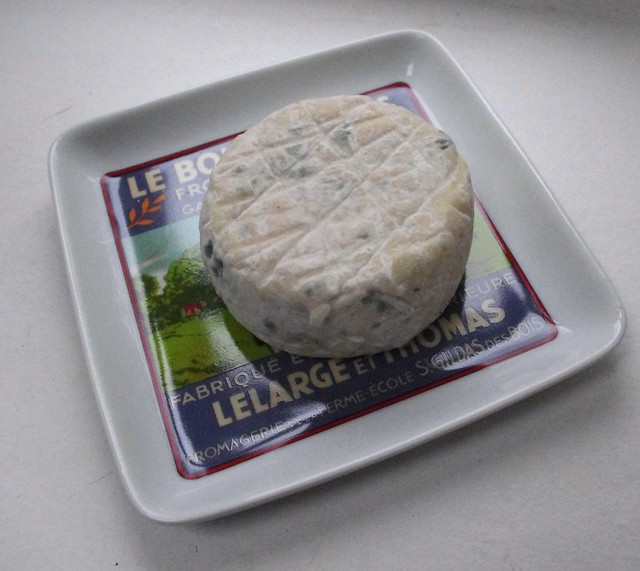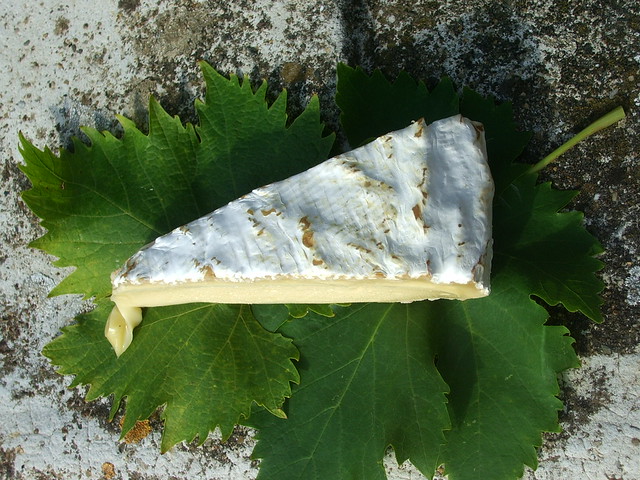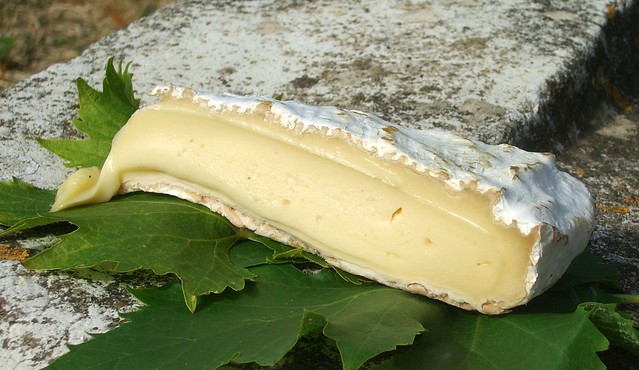
Let's talk about mold.
When it comes to food, mold is a major turn off. But when it comes to cheese, it has a purpose. Mold* imparts flavor and gives cheese its texture, its tang, its aroma and its ability to ooze across a plate, among other things.
Roquefort is the example that immediately springs to mind. Mold, specifically the penicillium roqueforti strain that makes up those delicious veins of blue, is what gives Roquefort its raison d'être.
On that note, I would like to introduce you to a delightful little moldy goat's cheese from the Deux-Sèvres department called le Sauvaget.

There is the obvious appearance of a bluish-gray mold on its surface, which is a wonderful thing. This mold means flavor!
Le Sauvaget is earthy, grassy, somewhat sour, salty and lactic. Its texture is dense, crumbly and coats your mouth with rich, fromage de chèvre deliciousness.
Goat cheese season is upon us, so enjoy this one while you can!
A crisp, mineral white wine such as a Sancerre would be a wonderful match with this cheese.
*If it's a soft cheese like brocciu or ricotta and you discover that a fuzzy alien has dropped in and set up home among those soft, white curds, then I would definitely recommend tossing it in the trash. Those are not the molds you want to know!
Pin It











